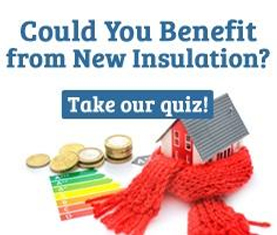Roofing Parts and Terminology
Built-up Roof
A low-slope (or flat-seeming) roof covered with alternating layers of roofing felt and hot-mapped asphalt and topped off with a layer of gravel.
Cornice
The portion of the roof projecting out from the side walls of the house.
Counterflashing
The flashing which is imbedded at its top in a wall or other vertical structure and is lapped down over shingle flashing.
Courses
Horizontal rows of shingles or tiles.
Deck/sheathing
The surface, usually plywood or oriented strand board (OSB), to which roofing materials are applied.
Dormer
A small structure projecting from a sloped roof, usually with a window.
Drip Edge
An L-shaped strip (usually metal) installed along roof edges to allow water run off to drip clear of the deck, eaves and siding.
Eaves
The lower edge of a roof (usually overhanging beyond the edge of the house).
Fascia
Trimboard behind the gutter and eaves.
Felt
The “tar paper” used by roofer, usually made of a combination of asphalt and either paper or rags.
Fire Rating
System for classifying the fire resistances of various materials. Roofing materials are rated Class A, B or C, with Class A materials having the highest resistance to fire originating outside the structure.
Flashing
Sheet metal or other material used at junctions of different planes on a roof to prevent leakage.
Frieze Board
A Board at the top of the house’s siding, forming a corner with the soffit.
Gable
The triangular upper part of a wall closing the end of a ridged roof.
Hip
The external angle at the junction of two sides of a roof whose supporting walls adjoin.
Joist
In a flat roof, a horizontal structural member over which sheathing is nailed.
Louvers
Slatted devices installed in a gable or soffit (the underside of eaves) to ventilate the space below a roof deck and equalize air temperature and moisture.
Oriented strand board (OSB)
Roof deck panels (4 by 8 feet) made of narrow bits of wood, installed lengthwise and crosswise in layers, and held together with a resin glue. OSB often is used as a substitute for plywood sheets.
Penetrations
Vents, pipes, stacks, chimneys-anything that penetrates a roof deck.
Rafter
A structural member (usually slanted) to which sheathing is nailed.
Rake
The slanting edge of a gabled roof extending beyond the end wall of the house.
Ridge
The horizontal line at the top edge of two sloping roof planes.
Sheathing
The rigid material (often on inch by six inch or one inch by 12 inch boards or sheets of plywood) which is nailed to the rafters, and to which shingles or other outside roofing materials are secured.
Shingle Flashing
Flashing that is laid in strips under each shingle and bent up the edge of a chimney or wall.
Slope
The number of inched of vertical rise in a roof per 12 inches of horizontal distance. Also referred to as pitch.
Soffit
The boards that enclose the underside of that portion of the roof which extends out beyond the sidewalls of the house.
Square
One hundred square feet of roof, or the amount of roofing material needed to cover 100 square feet when properly applied.
Truss
Engineered components that supplement rafters in many newer homes and buildings. Trusses are designed for specific applications and cannot be cut or altered.
Underlayment
The material (usually roofing felt) laid on top of sheathing before shingles are applied.
Valley
The less-than 180-degree angle where two sloping roof sections come together.
Valley Flashing
The flashing in valleys, extending in under to shingles on both sides.
Vapor Retarder
A material designed to restrict the passage of water vapor through a roof system or wall.
Author: Paul Kleinmeulman

















